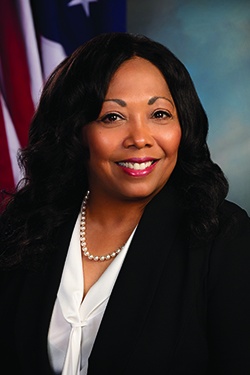
Land is one of the most important assets that a person, group or organization can own. It has been called the “original source of all material wealth,” and almost everything we use can be traced to it. I once read that 95 percent of our basic needs and requirements like food, clothing and shelter are obtained from land. Economic prosperity and natural resources have always been closely linked to land.
Consequently, I’m excited about the new Peoria Land Bank. A land bank is an entity created to help manage and dispose of vacant land, abandoned or tax-delinquent properties for redevelopment and better use. Land banks commonly operate where there are high housing vacancies and blight. They help to promote the restoration of problematic housing, especially in distressed areas.
Creating The Authority
A few months ago, the Peoria City Council approved an ordinance creating a Land Bank Authority and I had the pleasure of making initial appointments to the authority in August. The Peoria Land Bank will consist of 11 members of the public, the city and the county to utilize many strategies to help address blight and put vacant and abandoned properties back on the tax rolls. Key strategies will include:
- Demolishing vacant, abandoned and blighted buildings.
- Obtaining judicial deeds via the abandoned property state statute.
- Transferring vacant lots through a side-lot program.
- Salvaging valuable building materials in partnership with local providers and architectural salvage companies.
- Partnering with banks related to bank-owned properties and properties in foreclosure.
The Peoria Land Bank will provide opportunities for investors or developers to purchase land and properties at a low cost if they have immediate plans to restore and use it. Safe, affordable housing opportunities for all residents in the City of Peoria is a key component of community and neighborhood revitalization efforts. This can be accomplished through code enforcement efforts, leveraging funds to maximize affordable housing development, and a robust land management process. The Illinois Housing Development Agency has worked closely with the City of Peoria and provided $300,000 in funding to establish the land bank. It is a great opportunity to revive rundown and blighted areas of our city and enhance its overall look and value.
We Are All Connected
I purchased my very first home in 1989 on Peoria’s south side, a few blocks from Manual High School. A single working parent at the time, I was approved for an FHA loan for the $23,000 home. It was a stable neighborhood with majority homeowners, and my neighbors and I took pride in and care of our land and property. Outside of my education, my home purchase was the best investment I’d ever made. For ten years I lived in that home, later getting married and selling it for $43,000—almost twice more than what I had originally paid. This was the foundation for my purchase of additional, more valuable homes moving forward.
Sadly, today when I ride by my old neighborhood, I’m disturbed to see the decay that has occurred over the years: houses boarded and in disrepair; sagging roofs and unmaintained vacant lots; a grocery, pharmacy and business desert. And while I haven’t lived in zip code 61605 for decades, I clearly understand that what happens there affects me and everyone else in the city. That’s just a matter of fact. We are all connected.
A New Tool
A former colleague and Bradley University professor has been sending me news articles making the case for housing renovation and green space development over new development in heritage urban neighborhoods. I don’t want to rule out new development, as I see contiguous blocks of land dominated by condemned properties that could give way to a new development project. Yet, I see the professor’s point for renovating existing houses that still have good bones and, with some level of investment, could make nice homes for area residents. Collaboration is the best approach to neighborhood revitalization, so the idea of partnerships is very appealing with regard to our new land bank initiative.
Housing stock is extremely low in Peoria, and the demand for affordable, quality housing is high in all parts of the city. Affordable housing simply means housing that is affordable for the income a person has—typically not to exceed 30 percent of that income. Quality housing is the same for everyone in that it should be decent, in good working condition, respectable in appearance, and the right fit for the family living there. I want everyone in Peoria to have an affordable, quality home despite their income or geographic location.
The city of Kansas City, Missouri has a successful land bank, and many other cities have used this tool to rebuild vibrant communities, one property at a time. Thanks to the City Council, City staff and our partners at the Illinois Housing Development Agency, Peoria can give this tool a try. I don’t expect the Peoria Land Bank to be the single answer to cleaning up and reviving distressed areas of Peoria. But it is one strategy in a multi-faceted approach to city-wide neighborhood revitalization. It’s a way to protect one of our most valued resources—our land. PM
- Log in to post comments

